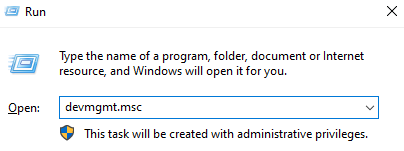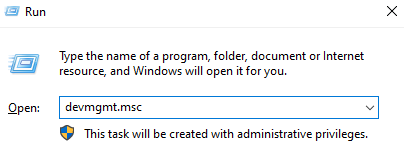How to Increase Screen Brightness in Windows 10
Adjusting the brightness of our devices has become an easy task we perform every day. Upping the brightness during the day makes it easier to see what's on the screen. Similarly, at night, you can lower it to allow your eyes to rest.
However, there is an error in Windows 10 that doesn't allow you to adjust the brightness of your screen at all. This can quickly become annoying, especially if you regularly tinker with the setting.
In our article, you can learn about various ways of troubleshooting this issue.

Why is this an Issue?
While PC users might only find this a small nuisance, laptop users reported serious battery issues. We all know that decreasing the brightness of your display is one of the best ways of saving battery life.
The sudden drain of batteries can be traced back to the brightness being too high up. On a PC, you more than likely have the option to change the brightness on your monitor.
However, if Windows 10 doesn't let you adjust your brightness on a laptop, you should troubleshoot the issue immediately.
Fixed: can't adjust brightness on Windows 10
We compiled a number of great methods for fixing issues related to the brightness of your computer display. Some solutions only work for specific devices, so make sure you're reading the right section!
Update your Display Adapter Drivers
A driver update is the first thing you should do regardless of what device you're using. Many Windows 10 users reported that doing this fixed their issues with the brightness not adjusting.
There are multiple ways in which you can update your drivers. Follow one of the guides which suit your approach.
Update your Drivers Manually
- Check what graphics card you're using:
- Press the Windows and R keys at the same time to launch the Run application.
- Type in dxdiag and press OK .

- Switch to the Display tab.
- Under Device , read the name and manufacturer of your card.

- Go to the manufacturer's website and navigate to their download page. Here are some of the most popular manufacturer pages:
- Intel Drivers & Software page
- NVIDIA Driver download page
- AMD Drivers and support page
- Find your graphics card and download its driver .
- Install the driver by double-clicking on the downloaded file and follow the on-screen instructions.
Make sure that you're always downloading and installing the correct driver that matches your graphics card. If you're unsure, you can always search on Google or contact the customer support of your manufacturer.
Never download drivers from a third party website - these files can be malicious and might harm your computer. Always ensure that the URL address of the website you're downloading from matches the official website.
Update your Driver automatically
There are a number of ways for automated driver updates. We will be using the integrated Device Manager .
- Press and hold the Windows key, then press R . This will launch the Run application.
- Type in devmgmt.msc and hit OK to open the Device Manager.

- Expand the Display adaptors section by clicking on the arrow icon .
- Right-click on your driver and select Update Driver .
You can also find and download third-party updater tools such as Driver Booster , DriverHub or DriverPack Solution . These three tools are all free and easy to use, but you can always look around the web for more advanced apps.
Adjust the brightness from Power Options
If you're unable to change your brightness, there is a chance that you're experiencing a Windows 10 bug. This bug can be solved by tweaking your Power settings.
This method works on laptops, but can be used on Windows 7 and Windows 8 as well:
- Navigate to Power Options :
- Search for Control Panel in your Search bar. Open the top result.

- Change the view mode to Category , then click on Hardware and Sound .
- Click Power Options .
On a laptop, you can right-click the Power icon in your taskbar, then choose Power Options . - Click on the Change plan settings link next to your selected plan.

- Instead of changing anything, click Change advanced power settings link. You can find this near the bottom of the window.
- Scroll down until you see Display . Expand it by clicking on the gear icon .
- Click on the icon next to all of the following options to expand them:
- Display brightness
- Dimmed display brightness
- Enable adaptive brightness
- Make your changes then press the Apply button. You can close this window by pressing OK .
- Restart your computer or laptop.
Re-enable your PnP Monitor
This method works for PnP monitor users. PnP means "plug and play," allowing you to use your device without installing any drivers.
The issue itself is that some driver or system updates might disable your monitor in the Device Manager . The cause of this is unknown, but it's good practice to check if it happened to you.
If you're using a generic PnP monitor, you might be able to solve Windows 10's brightness issues by following the steps below:
- Press and hold the Windows key, then press R . This will launch the Run application.
- Type in devmgmt.msc and hit OK to open the Device Manager.
- Expand Monitors by clicking on the arrow icon.
- Right-click on your PnP monitor and choose Enable device .
- Restart your computer and try adjusting your brightness again.
Still no luck? Make sure you read the next section as well for another solution.
Delete hidden devices under PnP Monitors
Similarly to the last method, this one only works for PnP Monitors. If you're using one of those, follow the steps below to potentially fix your brightness issues:
- Press and hold the Windows key, then press R . This will launch the Run application.
- Type in devmgmt.msc and hit OK to open the Device Manager.

- From the Device Manager's menu, click View , then choose Show hidden devices . If you already have this enabled, keep it on.

- Expand Monitors by clicking on the arrow icon .
- Right-click every hidden device and choose the Uninstall device . (Hidden devices appear more translucent than normal ones, see picture.)
- Restart your computer and try adjusting your brightness again.
Fix an ATI bug via registry Editor
Some ATI graphics card users have reported that Catalyst has a bug which makes it unable to control the brightness of your display.
Catalyst version 15.7.1 is the most reported for this bug. However, that doesn't make it impossible for the bug to appear on other versions.
You're an ATI user and also have Catalyst installed? The following method might be able to fix if you can't adjust your brightness:
- Press and hold the Windows key, then press R . This will launch the Run application.
- Type in RegEdit and hit OK . You will open the Registry Editor.
- In the Registry Editor, you can navigate by clicking on the arrow icon next to the name of a folder. By using this, navigate to the following path:
HKEY_LOCAL_MACHINE \ SYSTEM \ ControlSet001 \ Control\Class \ {4d36e968-e325-11ce-bfc1-08002be10318} \ 0000 - Double click on MD_EnableBrightnesslf2 . Change Value to 0 and repeat the same thing with KMD_EnableBrightnessInterface2 .
- Next, we will be navigating to a different path:
HKEY_LOCAL_MACHINE \ SYSTEM \ CurrentControlSet \ Control \ Class \{4d36e968-e325-11ce-bfc1-08002be10318} \ 0001 - Double click on MD_EnableBrightnesslf2 and change its Value to 0 . Do the same with KMD_EnableBrightnessInterface2 .
- Close the Registry Editor and restart your computer.
Final Word
We hope that one of these methods helped you to fix adjusting your brightness on Windows 10.
If you're looking for a software company you can trust for its integrity and honest business practices, look no further than SoftwareKeep. We are a Microsoft Certified Partner and a BBB Accredited Business that cares about bringing our customers a reliable, satisfying experience on the software products they need. We will be with you before, during, and after all the sales.
How to Increase Screen Brightness in Windows 10
Source: https://softwarekeep.com/help-center/cant-adjust-brightness-on-windows-10-heres-how-to-fix-it